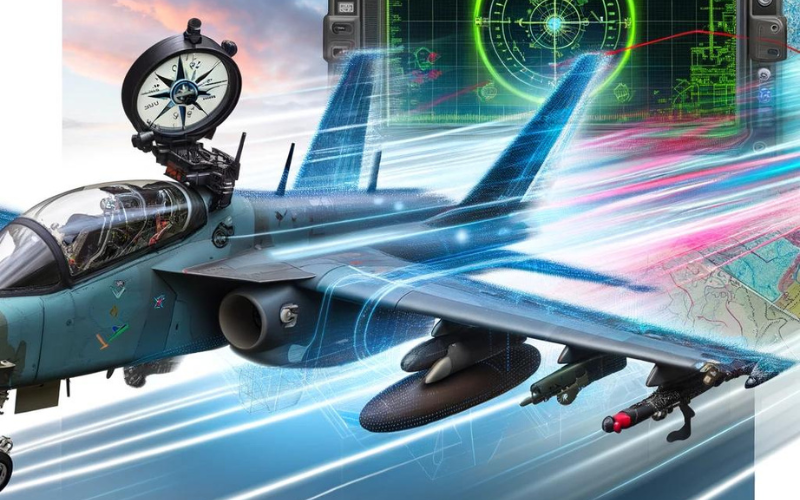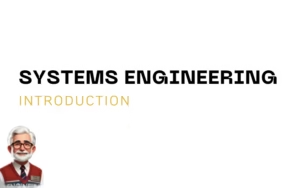Discover aircraft navigation, and its application in military aviation. This post explores the key navigations systems and the challenges shaping navigation’s future. Dive into the critical technology guiding military aircraft to mission success.
Table of Contents
Section 1: Fundamentals of Aircraft Navigation
Aircraft navigation is the discipline of guiding an aircraft from one location to another, whilst ensuring it arrives safely, efficiently, and accurately. Key objectives in navigation include:
- Determining the aircraft’s position.
- Establishing the desired destination.
- Identifying the most suitable and efficient route.
- Calculating the necessary time and fuel requirements for the journey.
- Maintaining the aircraft’s course and monitoring its progress in relation to the ground.
Various factors influence the navigation objectives, including:
- Weather conditions
- Airspace integration
- Aircraft performance
- Terrain and obstacles
- Adherence to relevant Regulations.
- Hostile territories, especially in military aircraft operations.
For military aircraft, precise navigation is not just about reaching a destination but also about strategy, timing, and tactical positioning, often in challenging environments.
Position
Navigation starts with the basic principles of position:
- latitude,
- longitude, and
- altitude.
Latitude and longitude provide a grid system to pinpoint any location on Earth, while altitude measures the height above sea level.
Navigation Techniques
Aircraft Navigation uses a set of techniques to determine the position of an aircraft, allowing it move along a predetermined trajectory called a Route.
In relation to regulations there are two types of of flight rules that can be used when flying.
- Visual Flight Rule (VFR) – Reliant on visual landmarks to navigate, therefore require good visibility.
- Instrumented Flight Rule (IFR) – Navigate using instruments in cockpit, therefore can navigate in low visibility.
The navigation techniques to be used depends on the which flight rules the aircraft is flying.
Traditional Navigation Techniques
Historically, pilots used VFR and therefore relied on visual landmarks (these can be buildings, towns, rivers, roads, railways etc), maps (Aeronautical/Navigation Charts), compasses, and basic instruments to navigate. This method, known as pilotage, required good visibility conditions and familiar terrain, making it less effective for military operations, especially in unknown or hostile territories.
Good visibility conditions are know as Visual Meteorological Conditions (VMC).
For more details on pilotage check out the pilotage blog here.
Modern Navigation techniques
Modern navigation has evolved with technology, introducing sophisticated systems that provide real-time data and greater accuracy. These systems include:
- Inertial Navigation Systems (INS), which use gyroscopes and accelerometers to track the aircraft’s movement from a known starting point without external reference.
- Global Positioning System (GPS), offering unparalleled accuracy using satellites to determine precise location information.
- Radar Navigation, allowing aircraft to detect other objects and terrain, useful in all weather conditions.
The transition from traditional to modern navigation techniques represents a significant leap in capability, particularly for military aircraft, enabling operations in any condition, day or night, with precision targeting and strategic mobility.
Civilian vs. Military Navigation
While both civilian and military aircraft use similar navigation principles, military operations demand additional layers of complexity and security. Military navigation systems are often designed to be resilient against electronic warfare tactics like jamming and spoofing. Furthermore, military missions may require navigation in GPS-denied environments, necessitating alternative methods such as inertial or celestial navigation to maintain accuracy.
Section 2: Navigation Systems in Military Aircraft
The precision and reliability of navigation systems in military aircraft are paramount, not just for strategic manoeuvring but also for the safety of the personnel involved. This section delves into the core navigation systems that are integral to military aviation, highlighting how technology has been harnessed to meet the exacting demands of military operations.
Inertial Navigation Systems (INS)
Inertial Navigation Systems (INS) stand as a cornerstone in military aircraft navigation. Utilising a combination of accelerometers and gyroscopes, INS can accurately determine an aircraft’s position, orientation, and velocity without the need for external references. This self-contained system is immune to jamming and deception, making it indispensable for operations in contested environments.
Global Positioning System (GPS) and Its Military Applications
The Global Positioning System (GPS) is a ubiquitous presence in navigation, offering unparalleled accuracy and global coverage. In military contexts, GPS is used not only for navigation but also for precision-guided munitions. The military version of GPS provides enhanced features like Selective Availability Anti-Spoofing Module (SAASM) and M-Code, designed to improve security and resistance to interference.
Tactical Air Navigation (TACAN)
Tactical Air Navigation (TACAN) offers both azimuth and distance measurements between an aircraft and a ground or shipborne station, providing a highly accurate method for military aircraft to determine their position. TACAN systems are often combined with VOR (VHF Omnidirectional Range) for the VORTAC system, used by both military and civilian aircraft for enhanced navigational capabilities.
Celestial Navigation in Modern Military Operations
Despite the advent of advanced technology, celestial navigation remains a key skill for military aviators. In scenarios where GPS or other electronic systems are compromised, the ability to navigate by the stars offers a fail-safe mechanism. This age-old technique, updated with modern tools, ensures that military aircraft can still find their way even in electronic warfare conditions.
Section 3: Challenges in Military Aircraft Navigation
Navigating the vast and unpredictable skies poses a unique set of challenges, especially for military aircraft, where precision and reliability are paramount. This section delves into the obstacles that military navigators face, including electronic warfare, natural phenomena, and cybersecurity threats, and discusses how these challenges are met.
Electronic Warfare and GPS Jamming
In the realm of military operations, electronic warfare is a constant threat. Adversaries employ sophisticated techniques to disrupt navigation systems, with GPS jamming being one of the most prevalent methods. GPS, a cornerstone of modern navigation, is particularly vulnerable to jamming, rendering aircraft unable to accurately determine their location, speed, or direction.
Natural Phenomena
Beyond human adversaries, nature itself can disrupt the best-laid navigation plans. Solar flares, for instance, emit large bursts of electromagnetic energy capable of disrupting satellite communications, including GPS signals. Similarly, the Earth’s magnetic fields, which are crucial for compass-based navigation, vary significantly over time and location, requiring constant adjustment and calibration.
Cybersecurity in Navigation
As navigation systems become increasingly digitised, they become vulnerable to cyber attacks. Hackers can potentially gain control of an aircraft’s navigation system, leading to severe security breaches. The integrity of navigation data is crucial, not just for operational success but also for the safety of the crew and mission security.
Mitigating Navigation Challenges
To counter these challenges, military aircraft employ a variety of strategies and technologies. Redundant systems, both digital and analog, ensure that if one system fails, another can take its place. Advanced encryption and cybersecurity measures protect navigation data from unauthorised access, and constant monitoring of space weather helps anticipate and mitigate the effects of solar flares.
Section 4: The Future of Military Aircraft Navigation
As we delve into the future of military aircraft navigation, it’s clear that technology is on a rapid ascent, pushing the boundaries of what’s possible in the skies. The evolution of navigation technology not only promises enhanced operational capabilities but also a revolution in strategic military planning and execution. This section explores the cutting-edge advancements and the potential future landscape of military aircraft navigation.
Advancements in Autonomous Navigation
The future of military navigation is steering towards greater autonomy. Autonomous navigation systems, leveraging advanced algorithms and artificial intelligence (AI), are set to redefine the operational dynamics of military aircraft. These systems can process vast amounts of data from various sensors in real-time, enabling precise navigation without human intervention. The integration of AI allows for adaptive learning, where the system improves its accuracy and efficiency based on past experiences and environmental interactions.
Role of AI in Future Navigation Systems
AI is the cornerstone of the next generation of military aircraft navigation. It enables the processing of complex navigation algorithms, sensor fusion, and real-time decision-making, significantly reducing the cognitive load on pilots and navigators. AI-driven systems can anticipate and react to dynamic environmental changes, offering optimized routes and enhancing mission success rates under variable conditions.
Satellite Augmentation Systems
Satellite Augmentation Systems (SAS) are enhancing the precision of GPS-based navigation. By providing additional correction signals to the standard GPS information, SAS improves the accuracy, integrity, and availability of navigation data. This is crucial for military operations where precision is paramount. The development of new satellite constellations and augmentation technologies promises even greater accuracies and global coverage, ensuring military assets can rely on the most precise navigation information available.
Quantum Navigation: Beyond GPS
Quantum navigation represents a groundbreaking shift, offering a GPS-independent method that could revolutionise military navigation. Utilising the quantum properties of atoms, this technology provides extremely accurate measurements of acceleration and gravity, enabling precise location tracking without the need for satellite signals. This is particularly beneficial in environments where GPS is compromised or unavailable.
The Impact of Breakthrough Technologies
Emerging technologies like quantum communications, blockchain for secure data transmission, and even the potential for space-based navigation systems are on the horizon. These innovations could further secure and enhance the robustness of military navigation systems, ensuring that they are tamper-proof and immune to existing vulnerabilities.
Superiority in the Skies
The future of military aircraft navigation is set to leverage unprecedented technological advancements, enhancing operational capabilities and strategic flexibility. With the integration of AI, the precision of satellite augmentation systems, and the pioneering potential of quantum navigation, the landscape of military operations will undergo a significant transformation. As these technologies mature and integrate into military assets, they will redefine the essence of strategic and tactical navigation, ensuring superiority in the skies.
Section 5: Case Studies
In the realm of military aviation, the importance of effective navigation cannot be overstated. Through the lens of historical and recent operations, we gain insights into the evolution of navigation technologies and their critical roles in mission success. This section explores notable case studies that highlight the advancements and challenges in military aircraft navigation.
Historical Perspective: The Doolittle Raid
The Doolittle Raid during World War II serves as an early example of the strategic importance of navigation in military operations. In 1942, sixteen U.S. B-25 bombers launched from the USS Hornet to conduct the first air raid on the Japanese mainland. The mission required precise navigation over vast oceanic distances, relying on celestial navigation and dead reckoning due to the limitations of the era’s technology.
Navigation Challenges: Operation Desert Storm
The first Gulf War, Operation Desert Storm, presented numerous navigation challenges, particularly in the featureless desert terrain. The success of coalition forces was partly due to the then-recently deployed GPS system, which provided unprecedented accuracy in navigation and targeting. This conflict served as a proving ground for GPS technology, showcasing its value in modern warfare.
Advancements in Autonomous Navigation: The Future Unmanned Missions
Looking towards the future, unmanned missions represent the next frontier in military navigation. Case studies of drone swarms and autonomous vehicles in recent conflicts provide a glimpse into how AI and autonomous systems are set to change the landscape of military operations. These technologies allow for more precise, efficient, and safer navigation in hostile environments.
Evolutionary Trajectory
These case studies reflect the evolutionary trajectory of navigation technologies from the basic celestial and dead reckoning methods to the sophisticated GPS and autonomous systems of today. Each case study not only showcases the strategic importance of navigation in military operations but also hints at the future possibilities and challenges. As technology advances, so too will the capabilities and complexities of military navigation, ensuring that it remains a critical component of operational success and strategic superiority.
Section 6: Training and Skills Development
In the high-stakes environment of military operations, the proficiency of navigators in utilising the latest technologies and methodologies is paramount. This section delves into the rigorous training and continuous skill development required for navigators in the military, highlighting the blend of traditional knowledge and cutting-edge technology that defines modern navigation training programs.
The Foundation of Navigator Training
Navigator training in the military begins with a solid foundation in the principles of navigation. This includes understanding the basics of celestial navigation, dead reckoning, and the use of traditional navigational instruments. While these might seem antiquated in the era of satellite navigation, they remain crucial for ensuring redundancy in navigation capabilities.
Integration of Advanced Technologies
As cadets progress, the curriculum swiftly incorporates more advanced technologies such as GPS, Inertial Navigation Systems (INS), and other satellite-based systems. Training includes not only the operational aspects of these technologies but also strategies for dealing with electronic warfare, such as GPS jamming and spoofing. Simulators play a crucial role in this phase, providing a realistic yet controlled environment for practice.
Specialised Training for Unmanned Systems
With the increasing reliance on unmanned aerial vehicles (UAVs) and autonomous systems in military operations, navigators must also become proficient in remote and autonomous navigation. This includes understanding the principles of AI-based systems, remote sensing, and data analysis to make real-time decisions.
Continuous Learning and Adaptation
The field of navigation is constantly evolving, with new technologies and challenges emerging regularly. Therefore, continuous learning and skill development are integral parts of a military navigator’s career. Workshops, seminars, and ongoing training programs ensure that navigators stay at the forefront of navigation technology and techniques.
Virtual Reality (VR) and Simulation Training
Virtual reality and advanced simulation technologies have transformed navigation training, offering realistic scenarios that can mimic a wide range of operational environments and conditions. These tools allow for safe, repeated practice of critical skills, from emergency procedures to navigating in denied environments.
Conclusion: Navigating the Future
As we conclude our comprehensive journey through the intricate world of military aircraft navigation, it’s evident that this field is not just about guiding aircraft from point A to point B. It’s a complex interplay of technology, skill, strategy, and continuous evolution that plays a pivotal role in the success of military operations. From the fundamental principles of navigation to the cutting-edge advancements on the horizon, the importance of precise, reliable navigation cannot be overstated.
The historical and modern case studies highlighted in this blog post underscore the critical role that navigation has played in military history and will continue to play in the future. These examples demonstrate not only the strategic importance of navigation technology but also the bravery and skill of those who wield it.
Training and skills development for military navigators is an ongoing process, blending traditional navigation techniques with state-of-the-art technology. This ensures that navigators are prepared to face not only the challenges of today but also the unknowns of tomorrow. The evolution of navigation technology, from celestial navigation to GPS and beyond, reflects the broader trends in military strategy and technology: an unending quest for precision, reliability, and advantage in an ever-changing environment.
Looking ahead, the future of military aircraft navigation promises even greater advancements. With the integration of AI, quantum navigation, and other emerging technologies, the next generation of navigators will operate in a world where the boundaries of what’s possible are continually expanding. These technologies will not only enhance the capabilities of military aircraft but also redefine the very nature of navigation and strategic planning.
As we stand on the cusp of this new era, it’s clear that the journey of military aircraft navigation is far from complete. The challenges and opportunities that lie ahead will require not only technological innovation but also a deep understanding of the principles that have guided navigators through the ages. It is this blend of tradition and innovation that will navigate the future of military aviation into uncharted territories.
This exploration of military aircraft navigation has shed light on a field that is both ancient and cutting-edge, demonstrating its critical importance in the past, present, and future of military operations. As technology advances and new challenges emerge, the role of navigation in ensuring the safety, effectiveness, and strategic superiority of military operations will only grow. Let us watch with anticipation as the next chapter in the story of military aircraft navigation unfolds, guiding us into a future where the sky is not the limit, but just the beginning.





Pingback: Pilotage - Engineers Retreat